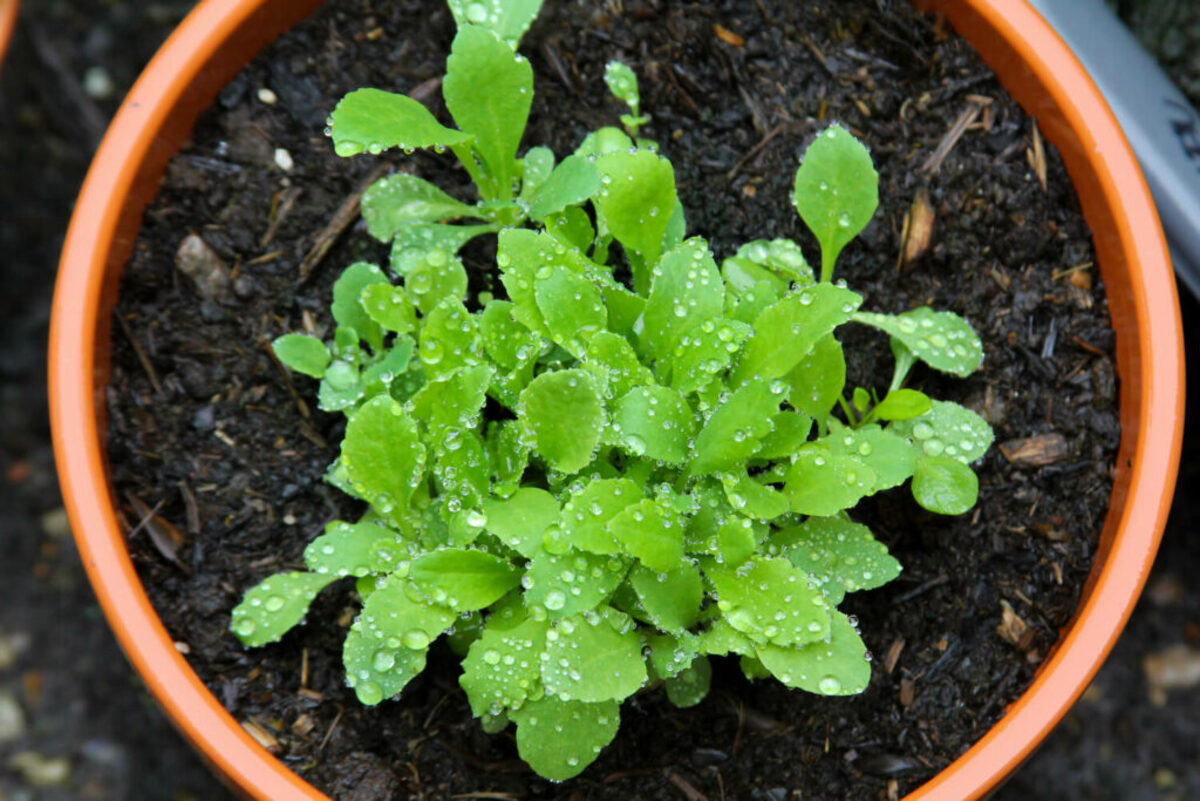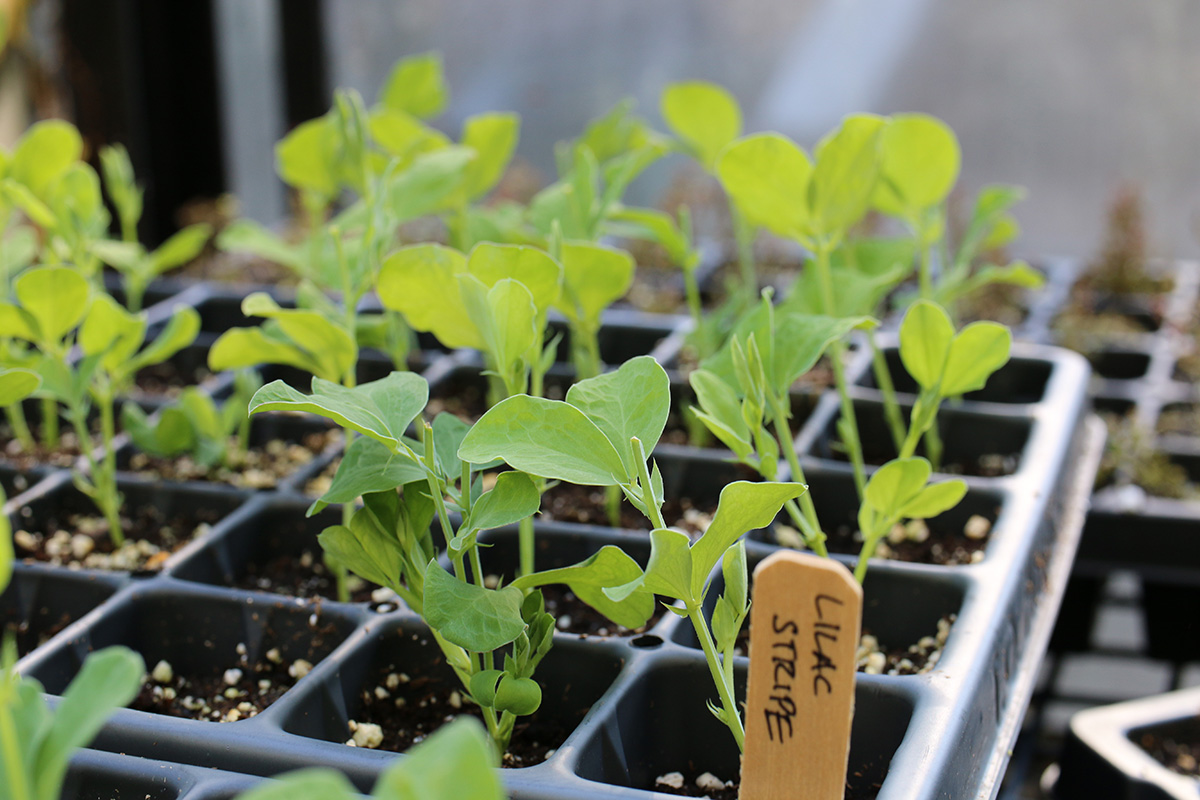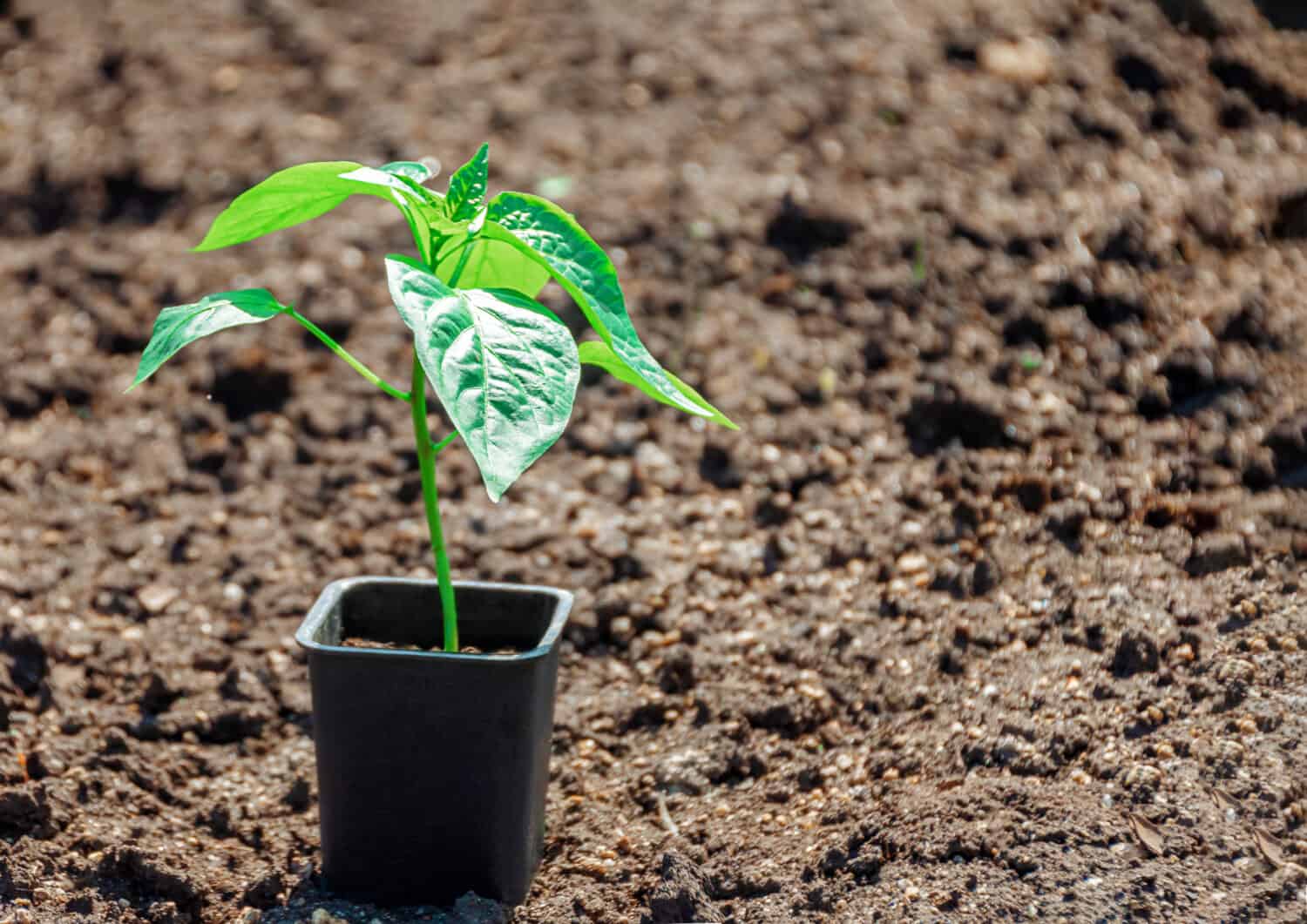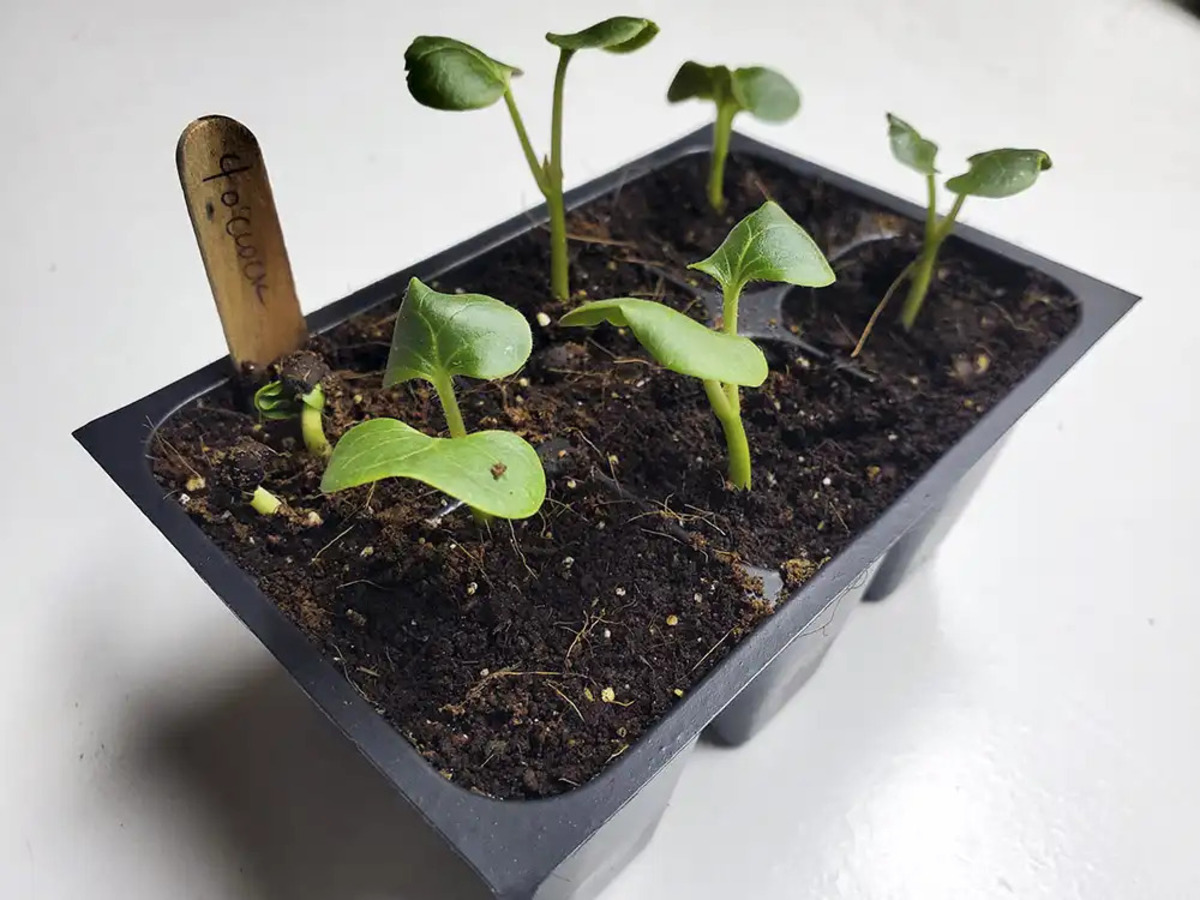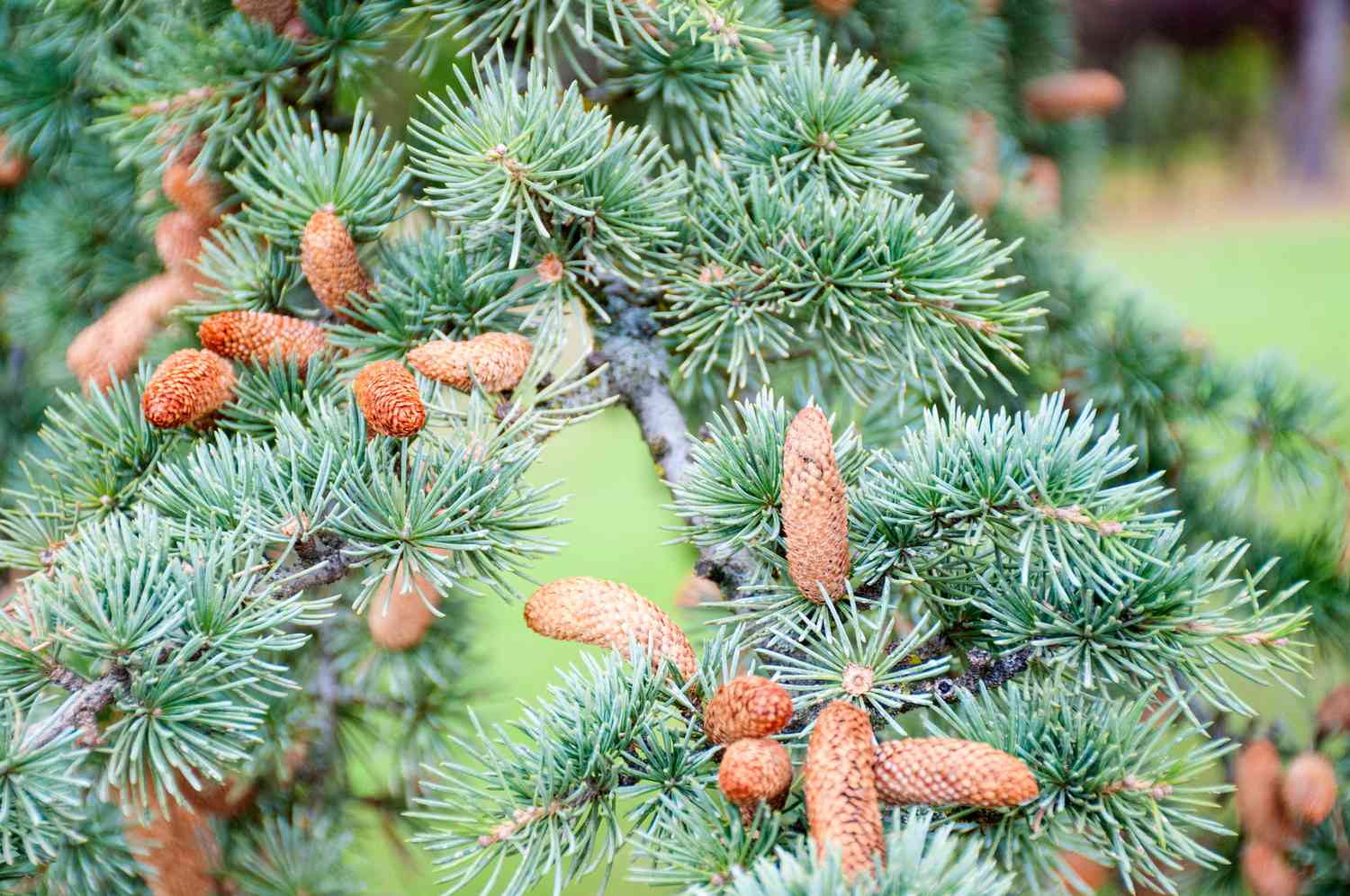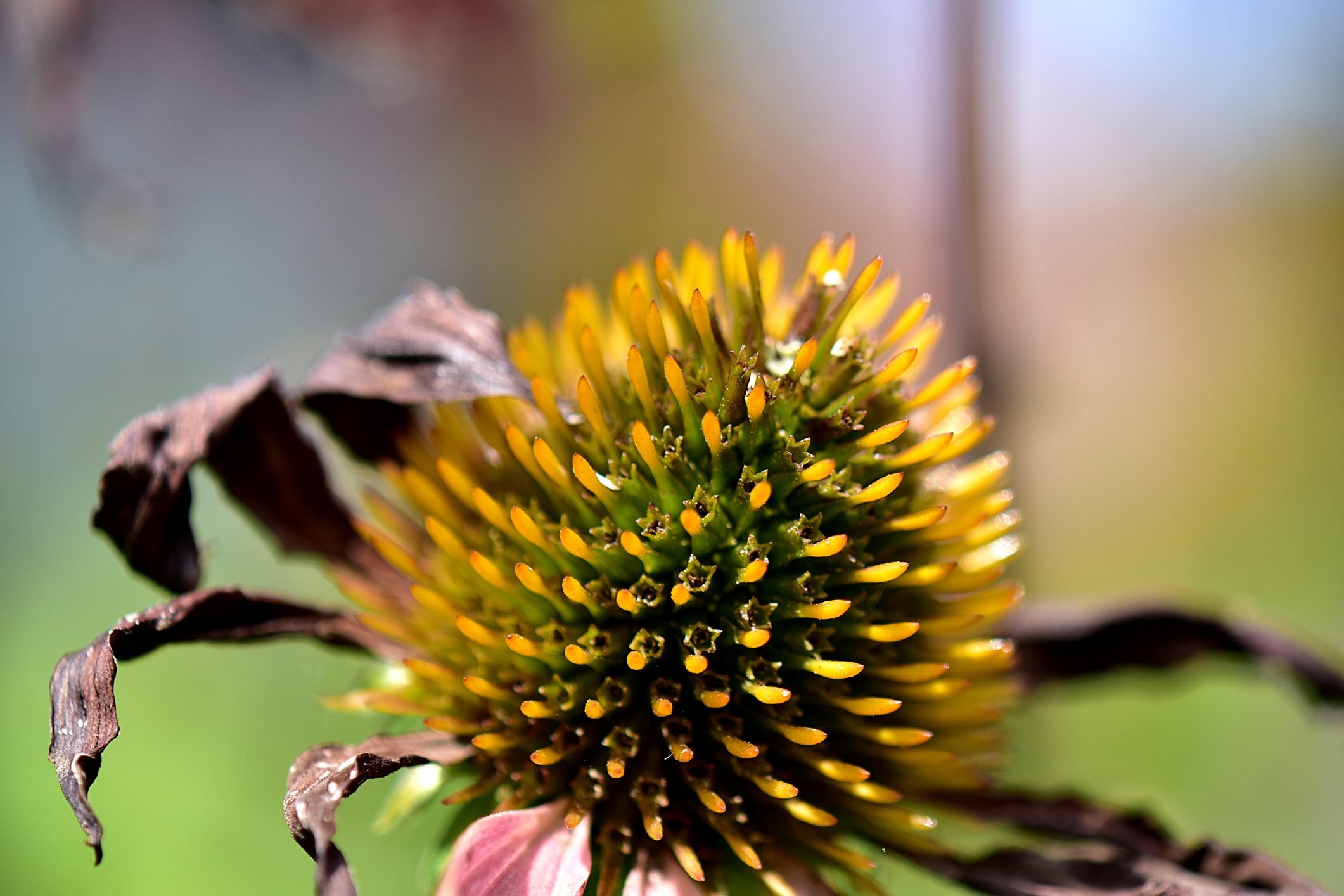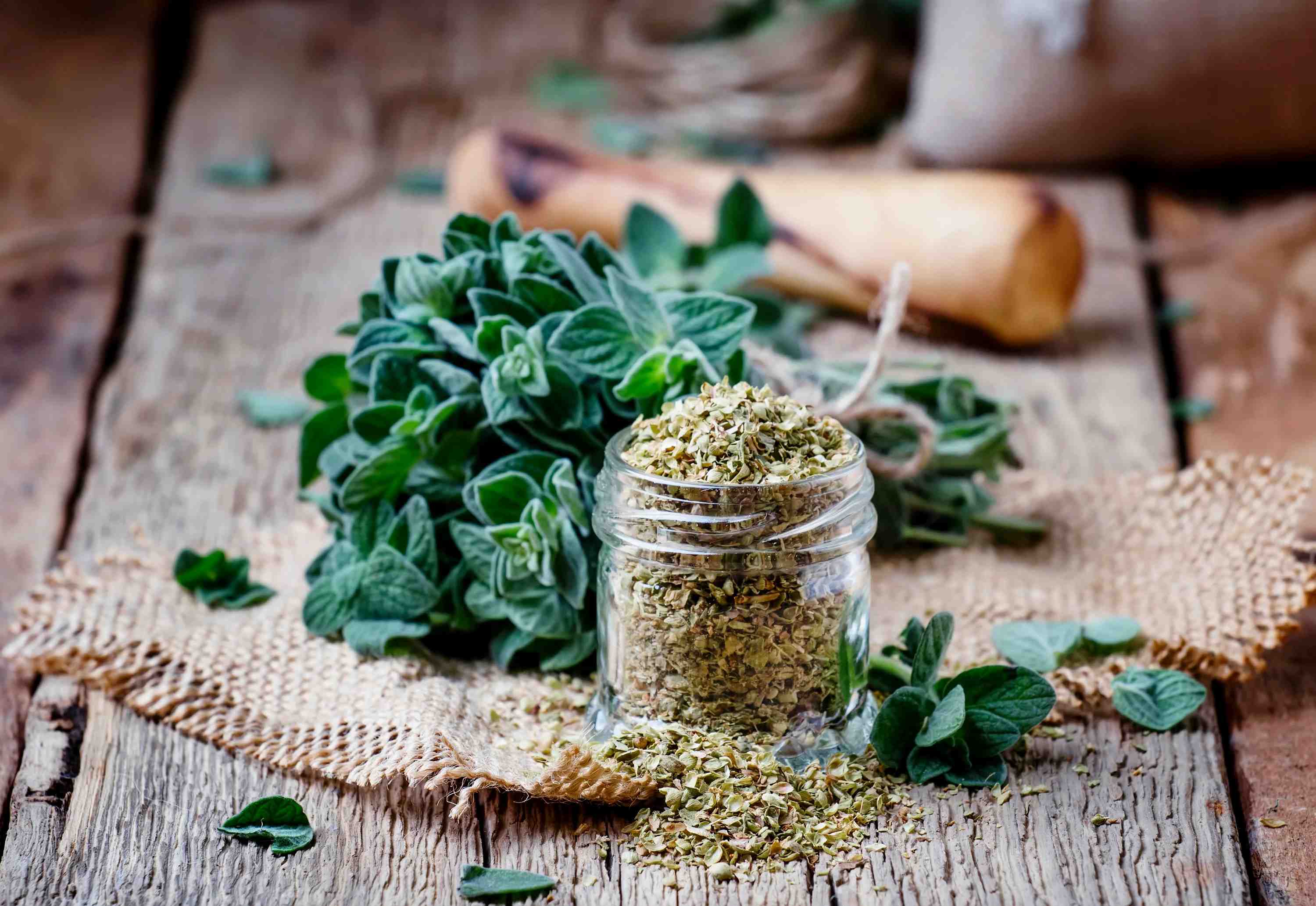Home>Types of Gardening>Edible Gardening>What Do Watermelon Seedlings Look Like
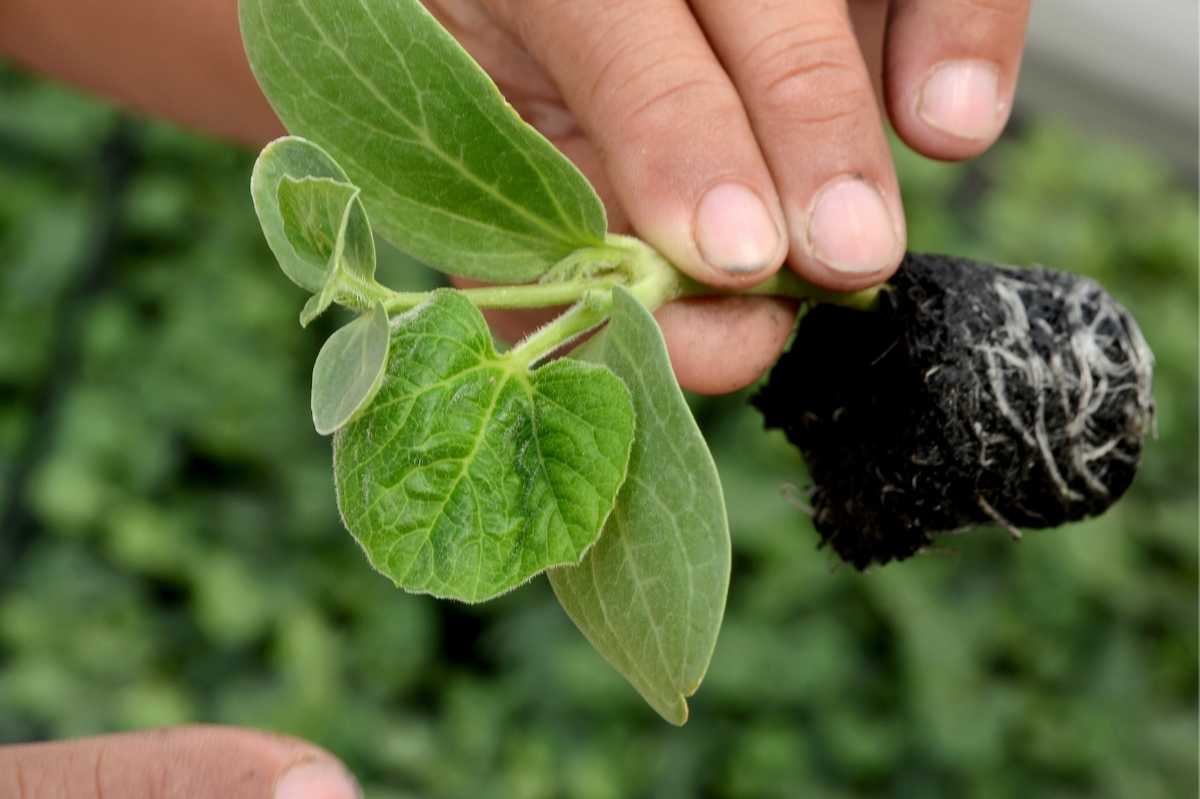

Edible Gardening
What Do Watermelon Seedlings Look Like
Modified: January 22, 2024
Curious about watermelon seedlings? Learn how to identify them and get expert tips on edible gardening.
(Many of the links in this article redirect to a specific reviewed product. Your purchase of these products through affiliate links helps to generate commission for Chicagolandgardening.com, at no extra cost. Learn more)
Table of Contents
- Introduction
- Importance of Identifying Watermelon Seedlings
- Characteristics of Watermelon Seedlings
- Size and Shape of Watermelon Seedlings
- Leaf Structure of Watermelon Seedlings
- Stem Appearance of Watermelon Seedlings
- Root Development of Watermelon Seedlings
- Color and Texture of Watermelon Seedlings
- Common Mistakes in Identifying Watermelon Seedlings
- Conclusion
Introduction
Welcome to the exciting world of edible gardening! Growing your own fruits and vegetables can be a rewarding and fulfilling experience. One popular choice among gardeners is watermelon, a refreshing and delicious fruit that thrives in warm climates. However, before diving into the process of growing watermelons, it is important to be able to identify watermelon seedlings accurately.
Identifying watermelon seedlings is crucial for several reasons. Firstly, it allows you to differentiate between desirable plants and weeds, ensuring that you invest your time and efforts into nurturing the right seedlings. Secondly, understanding the distinctive features of watermelon seedlings helps you provide appropriate care and conditions for their growth. Lastly, being able to identify watermelon seedlings enables you to monitor their progress and make necessary adjustments to maximize their yield.
Watermelon seedlings possess unique characteristics that distinguish them from other plants. By familiarizing yourself with these traits, you can confidently identify watermelon seedlings and contribute to their success. This article will guide you through the key features to look for when identifying watermelon seedlings, including their size and shape, leaf structure, stem appearance, root development, color, and texture.
Whether you are a seasoned gardener or a beginner, gaining a thorough understanding of watermelon seedlings will set you up for a successful growing season. So, let’s dive in and explore the fascinating world of watermelon seedlings!
Importance of Identifying Watermelon Seedlings
Identifying watermelon seedlings is not just a matter of curiosity; it is a crucial step in the process of growing healthy and productive watermelon plants. Understanding the importance of identifying watermelon seedlings will help you make informed decisions and take appropriate actions to ensure the success of your garden. Here’s why it is essential:
1. Differentiating between desirable plants and weeds: One of the primary reasons for identifying watermelon seedlings is to distinguish them from weeds. Weeds can pose significant challenges to the growth and development of your watermelon plants. By accurately identifying the seedlings, you can prevent the growth of weeds and focus your time and energy on nurturing the watermelon plants.
2. Providing appropriate care and conditions: Watermelon seedlings have specific requirements for optimal growth. By identifying them correctly, you can provide the necessary care, such as watering, fertilizing, and providing the right amount of sunlight. This ensures that the seedlings have the best chance of thriving and producing delicious fruits.
3. Monitoring growth and making necessary adjustments: Understanding the characteristics of watermelon seedlings allows you to monitor their growth progress. You can observe their size, leaf development, and overall health to ensure they are growing as expected. If any issues arise, such as nutrient deficiencies or pest infestations, early detection through proper identification allows you to make timely adjustments and address the problems effectively.
4. Maximizing yield and harvest: Proper identification of watermelon seedlings enables you to optimize the yield of your garden. By providing adequate support, such as trellises or supports, for vining varieties, you can ensure the plants grow vertically and save space. This allows for better air circulation and light exposure, resulting in larger, healthier fruits and a more abundant harvest.
5. Enhancing overall gardening experience: Finally, being able to identify watermelon seedlings enhances your overall gardening experience. It gives you a sense of satisfaction and accomplishment as you watch the seedlings grow into mature plants and produce succulent watermelons. Understanding the specific needs and characteristics of watermelon seedlings allows you to connect with your garden on a deeper level, fostering a greater appreciation for the natural world.
By recognizing the significance of identifying watermelon seedlings, you can set yourself up for a successful and enjoyable gardening journey. It empowers you to provide the necessary care, monitor their growth, and make adjustments as needed, ultimately leading to a bountiful harvest of sweet, juicy watermelons.
Characteristics of Watermelon Seedlings
Watermelon seedlings possess distinctive traits that set them apart from other plants. Understanding these characteristics will enable you to identify watermelon seedlings accurately. Here are the key features to look for:
1. Size and Shape: Watermelon seedlings typically start off small, measuring about 1 to 2 inches (2.5 to 5 centimeters) in height. As they grow, they elongate and develop a more oblong shape. The cotyledons, or seed leaves, are round and usually have a slightly wrinkled appearance.
2. Leaf Structure: The leaves of watermelon seedlings are deeply lobed and have a scalloped or jagged edge. They are dark green in color and have a smooth texture. As the seedlings mature, additional sets of true leaves will emerge, replacing the cotyledons. These true leaves will have a similar lobed structure but will appear more elongated in shape.
3. Stem Appearance: The stem of a watermelon seedling is typically green, thick, and succulent. It may have a slight reddish or purplish tinge near the base. As the seedling grows, the stem becomes firmer and sturdier, allowing it to support the weight of the developing plant.
4. Root Development: Watermelon seedlings have a well-developed root system. The roots are white or light in color and spread out horizontally. They anchor the seedling into the soil and absorb water and nutrients for growth.
5. Color and Texture: Initially, the color of watermelon seedlings may vary slightly depending on the variety. However, most seedlings will have a vibrant green color. The leaves and stems have a smooth texture, and the surface may appear slightly glossy.
6. Growth Rate: Watermelon seedlings are known for their vigorous growth. Under optimal conditions, they can grow several inches in a matter of weeks. This rapid growth is a positive sign that the seedling is healthy and receiving the necessary nutrients and sunlight.
By familiarizing yourself with these characteristics, you will be able to confidently identify watermelon seedlings as they emerge from the soil. Proper identification ensures that you can provide the appropriate care and attention needed for their successful growth and development.
Size and Shape of Watermelon Seedlings
Watermelon seedlings go through distinct stages of growth, and their size and shape can vary throughout these stages. Understanding the typical size and shape of watermelon seedlings will help you accurately identify them as they emerge from the soil. Here’s what to look for:
1. Initial Size: When watermelon seedlings first emerge, they are quite small, usually measuring around 1 to 2 inches (2.5 to 5 centimeters) in height. At this stage, they may resemble tiny green shoots or sprouts. The small size is due to the fact that watermelon seeds themselves are relatively small.
2. Elongation: As watermelon seedlings continue to grow, they start to elongate and develop a more oblong shape. The stem extends upwards while the cotyledons (seed leaves) remain close to the soil surface. This elongation is a sign that the seedling is actively reaching for sunlight to initiate photosynthesis.
3. Leaf Expansion: Once the seedling has elongated, it will begin to develop its first set of true leaves. These leaves are larger and more developed compared to the initial cotyledons. They often have a lobed or deeply serrated edge and a darker shade of green. The shape of the true leaves can vary depending on the specific variety of watermelon.
4. Maturation: As the watermelon seedling continues to grow, it will undergo further changes in size and shape. The stem becomes thicker, more robust, and able to support the weight of the developing plant. The leaves also increase in size and form a more distinct and recognizable watermelon leaf structure.
5. Vine Development: If you are growing a vining variety of watermelon, you will notice that the seedlings start to produce vine-like growth. The stems become more flexible and begin to trail along the ground or climb up a trellis or support structure. The overall shape of the vine can vary depending on the specific variety and growing conditions.
It’s important to note that the exact size and shape of watermelon seedlings can vary depending on factors such as the specific variety, growing conditions, and the stage of growth. However, by familiarizing yourself with the general trends in size and shape, you will be better equipped to identify watermelon seedlings accurately as they progress through their growth journey.
Leaf Structure of Watermelon Seedlings
The leaf structure of watermelon seedlings is a key characteristic that can help you accurately identify them. Understanding the distinct features of their leaves will enable you to differentiate watermelon seedlings from other plants in your garden. Here’s what you need to know about the leaf structure of watermelon seedlings:
1. Leaf Shape: Watermelon seedlings have leaves that are generally rounded or heart-shaped. The shape can vary slightly depending on the specific variety, but most watermelon seedlings have broad, lobed leaves. These lobes can appear rounded, jagged, or scalloped.
2. Leaf Color: The leaves of watermelon seedlings are typically a vibrant shade of green. The green color indicates that the seedlings are actively photosynthesizing and producing energy for growth. The intensity of the green color may vary slightly depending on the variety and growing conditions.
3. Leaf Texture: The leaves of watermelon seedlings have a relatively smooth and slightly glossy texture. They may feel soft to the touch, indicating that the leaves are still young and tender. As the seedlings mature, the leaves may acquire a slightly rougher texture, but they will still maintain their overall smoothness.
4. Leaf Veins: When examining the leaves of watermelon seedlings, you may notice the presence of prominent veins. These veins are the vascular system of the plant, responsible for transporting water, nutrients, and sugars throughout the leaves and the rest of the plant. The veins contribute to the overall structure and support of the leaves.
5. Leaf Arrangement: Watermelon seedlings exhibit an alternate leaf arrangement. This means that the leaves are not directly opposite each other on the stem but rather staggered along the stem. As the seedlings grow, additional sets of true leaves will emerge alternately from the stem in a spiral pattern.
By understanding the leaf structure of watermelon seedlings, you can confidently identify them in your garden. Their rounded or heart-shaped leaves, vibrant green color, smooth texture, prominent veins, and alternate arrangement all contribute to their distinctive appearance. By paying attention to these characteristics, you will be able to differentiate watermelon seedlings from other plants and provide them with the care they need to thrive.
Stem Appearance of Watermelon Seedlings
The stem appearance of watermelon seedlings holds valuable information for accurate identification. By understanding the characteristics of their stems, you can confidently differentiate watermelon seedlings from other plants in your garden. Here’s what to look for when examining the stem appearance of watermelon seedlings:
1. Color: The stems of watermelon seedlings are typically green, reflecting their healthy and vigorous growth. However, you may also notice a slight reddish or purplish tinge near the base of the stem. This pigmentation is natural and can vary depending on the specific variety and growing conditions. The color of the stem may become more pronounced as the seedlings mature.
2. Thickness and Texture: The stems of watermelon seedlings are initially thin and succulent when they first emerge from the soil. As the seedlings grow, the stems gradually become thicker and more robust, providing support for the developing plant. The texture of the stem is generally smooth, with a slight firmness to the touch. As the seedling matures, the stem may also develop tiny hairs or fuzz.
3. Growth Habit: Watermelon seedlings exhibit an upright growth habit, with the stem extending vertically from the soil. As the seedling grows, it may start to branch out and produce lateral stems. However, the primary stem remains the main axis of growth and support for the plant. In the case of vining varieties, the stems may also begin to trail along the ground or climb up trellises or support structures.
4. Leaf Attachment: The stems of watermelon seedlings serve as the connection point for the leaves. You will notice that the leaves are attached to the stem using petioles, which are the slender stalks that connect the leaf blade to the stem. The petioles allow the leaves to receive sunlight and facilitate the transport of water and nutrients to and from the stem.
5. Emergence of Side Shoots: As watermelon seedlings grow, they may start to produce side shoots or lateral branches from the main stem. These side shoots will eventually give rise to additional leaves, flowers, and fruit. The emergence of side shoots is a positive sign of healthy growth and indicates that the seedling is progressing well.
By observing these stem characteristics, you can confidently identify watermelon seedlings in your garden. The green color, thickness, texture, growth habit, leaf attachment, and presence of side shoots all contribute to the unique appearance of the stem. Understanding these features allows you to provide appropriate care and support to ensure the successful growth and development of your watermelon plants.
Root Development of Watermelon Seedlings
The root development of watermelon seedlings is a critical aspect to understand in order to accurately identify and care for them. Examining the roots of the seedlings provides valuable insights into their overall health and growth. Here’s what you need to know about the root development of watermelon seedlings:
1. Color: The roots of watermelon seedlings are typically white or light in color. This is a sign of healthy root development, indicating that the roots are actively absorbing water and nutrients from the soil. Healthy roots contribute to the overall stability and productivity of the seedlings.
2. Spread: Watermelon seedlings develop a well-branched, horizontal root system. The roots spread out in various directions, anchoring the seedling into the soil and providing stability. The extensive root network allows the seedlings to efficiently access water and nutrients, ensuring their optimal growth.
3. Root Hairs: When examining the roots of watermelon seedlings, you may notice tiny, hair-like structures called root hairs. These root hairs greatly increase the surface area of the roots, enabling them to absorb water and nutrients more effectively. The presence of abundant root hairs is an encouraging sign of good root health and function.
4. Root Length: As watermelon seedlings grow, so do their roots. Initially, the roots are relatively short, as they primarily focus on establishing a strong foundation. However, as the seedlings mature, the roots elongate and extend deeper into the soil. This increased root length enhances the plant’s ability to access water and nutrients from a wider range of soil depths.
5. Root System Structure: Watermelon seedlings develop a fibrous root system. This means that they produce numerous fine, branching roots rather than a few thick, primary roots. The fibrous root system improves the plant’s ability to take up water and nutrients, as well as anchor the seedling securely in the soil.
Understanding and monitoring the root development of watermelon seedlings is crucial for their overall health and success. A well-established and healthy root system ensures that the seedlings can absorb the necessary resources for growth and nourishment. By paying attention to root color, spread, presence of root hairs, length, and overall structure, you can assess the health and vitality of your watermelon seedlings and provide the necessary care to support their development.
Color and Texture of Watermelon Seedlings
Examining the color and texture of watermelon seedlings can offer valuable insights into their health, vigor, and overall condition. By understanding the typical color and texture of watermelon seedlings, you can accurately identify them and ensure they are thriving. Here’s what to look for:
1. Color: Generally, watermelon seedlings have a vibrant green color. The vivid green hue indicates that the seedling is actively photosynthesizing and producing energy for growth. However, it’s important to note that the shade of green may vary slightly depending on the specific variety and growing conditions. Some seedlings may exhibit a lighter green or even a slight yellowish tint, particularly if they are experiencing nutrient deficiencies or inadequate sunlight.
2. Leaf Color: The leaves of watermelon seedlings contribute to their overall color. The individual leaves are typically a deeper shade of green compared to the stem. This is because the leaves contain higher concentrations of chlorophyll, the pigment responsible for photosynthesis. Healthy watermelon seedlings exhibit leaves that are uniformly green without any signs of discoloration, spots, or browning.
3. Stem Color: The stem of watermelon seedlings is generally green, matching the color of the leaves. However, as the stem grows and matures, you may observe a slight reddish or purplish tinge near the base of the stem. This pigmentation is a normal occurrence in watermelon seedlings and varies depending on the specific variety and growing conditions.
4. Texture: The texture of watermelon seedlings is smooth, especially on the leaves and stems. The leaf surface may have a slightly waxy or glossy appearance. As the seedlings mature, the stems may develop tiny hairs or fuzz, which is a natural characteristic. It’s important to note that the leaves and stems should feel firm to the touch, indicating healthy turgidity.
5. Overall Appearance: Healthy watermelon seedlings should have a vibrant, uniform appearance. The leaves and stems should be free from any signs of damage, such as wilting, yellowing, or discoloration. Additionally, the seedlings should exhibit sturdy growth, with leaves and stems held upright.
By evaluating the color and texture of watermelon seedlings, you can assess their overall health and determine if they are thriving. A vibrant green color, smooth texture, and firmness indicate that the seedlings are receiving adequate sunlight, nutrients, and water for optimal growth. If you notice any abnormalities in color or texture, it may be an indication of underlying issues that need to be addressed to ensure the successful development of your watermelon seedlings.
Common Mistakes in Identifying Watermelon Seedlings
Identifying watermelon seedlings accurately can be a challenging task, especially for inexperienced gardeners. There are several common mistakes that can lead to misidentification and potentially hinder the successful growth of your watermelon plants. By being aware of these common mistakes, you can avoid them and ensure that you are correctly identifying your watermelon seedlings. Here are some mistakes to watch out for:
1. Confusing seedlings with weeds: One of the most common mistakes is mistaking watermelon seedlings for weeds. Watermelon seedlings can initially resemble other plants during their early growth stages, and without careful observation, they can be mistakenly identified as unwanted plants. It is crucial to familiarize yourself with the specific characteristics of watermelon seedlings to prevent unintentional removal or neglect of these valuable plants.
2. Relying solely on leaf shape: While the leaf shape of watermelon seedlings can be helpful in identification, relying solely on this feature can be misleading. Leaf shapes can vary slightly among different watermelon varieties, and environmental factors can also cause shape variations. It is important to consider other features, such as stem color, texture, and overall plant structure, to ensure accurate identification.
3. Overlooking distinguishing features: Watermelon seedlings possess unique characteristics, such as the presence of lobed leaves, an upright growth habit, and a fibrous root system. Overlooking these distinguishing features can lead to misidentification. Taking the time to closely examine and compare the traits of your seedlings with reference images or descriptions can help you correctly identify them.
4. Neglecting growth patterns: Watermelon seedlings have distinct growth patterns, particularly in vining varieties. Failure to recognize and accommodate their growth habits can result in poor plant support, reduced yields, and potential damage. It is important to provide appropriate trellising or support structures to ensure the healthy development of these vining seedlings.
5. Not considering seedling age: The age of watermelon seedlings can significantly impact their appearance and characteristics. Seedlings at different stages of development may exhibit variations in leaf shape, stem thickness, and overall size. It is essential to consider the age of your seedlings when identifying them, especially if you have multiple batches of seeds or transplants.
By being mindful of these common mistakes in identifying watermelon seedlings, you can avoid misidentifications and provide the appropriate care needed for their successful growth. Take the time to closely observe the unique characteristics of your seedlings, consider their growth patterns, and consult reliable resources when in doubt. With practice and attention to detail, you will become confident in accurately identifying your watermelon seedlings and nurturing them into healthy, productive plants.
Conclusion
Understanding how to identify watermelon seedlings is a fundamental skill for any gardener, whether you’re a seasoned pro or just starting your gardening journey. By familiarizing yourself with the characteristics of watermelon seedlings, such as their size and shape, leaf structure, stem appearance, root development, and color and texture, you can confidently differentiate them from other plants in your garden.
Accurate identification of watermelon seedlings is crucial for several reasons. It allows you to differentiate between desirable plants and weeds, ensuring that you provide the right care and attention to the seedlings that will eventually bear delicious watermelons. Additionally, proper identification helps you monitor the growth and development of the seedlings, making necessary adjustments and maximizing their yield. Understanding their specific requirements and characteristics enhances your overall gardening experience, deepening your connection with the natural world.
In this article, we have explored the importance of identifying watermelon seedlings, the characteristics to look for, and common mistakes to avoid. By incorporating this knowledge into your gardening practices, you can nurture your watermelon seedlings with confidence, leading to healthy, thriving plants and a bountiful harvest of sweet, juicy watermelons.
So, as you embark on your edible gardening journey and plant watermelon seeds, take the time to observe the unique traits of your seedlings. Appreciate the differences in size and shape, the intricate leaf structure, the vibrant stem appearance, the robust root development, and the colors and textures that make each watermelon seedling unique.
Remember, gardening is a journey filled with learning and discovery. Embrace the process, enjoy the beauty of watching your seedlings grow, and savor the satisfaction of harvesting your own homegrown watermelons.
